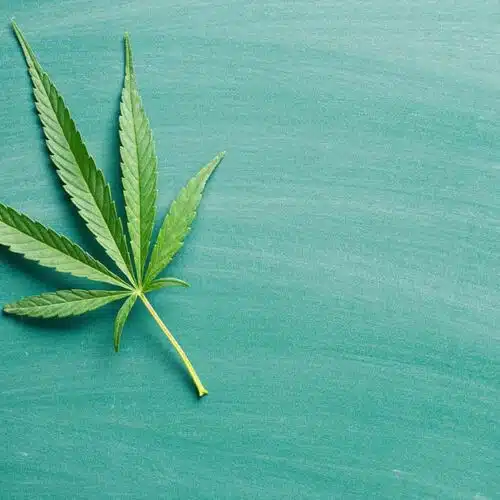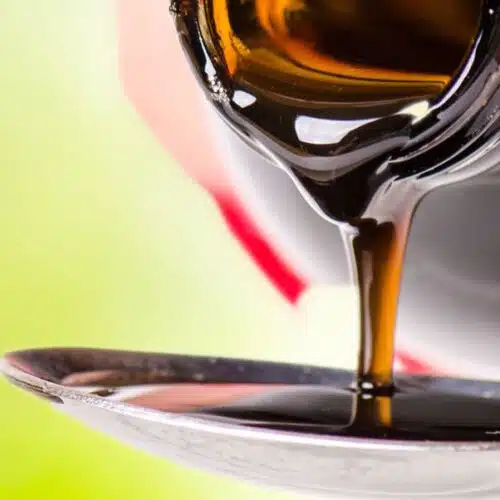The American Chemical Society and American Society of Pharmacognosy
Several studies have associated the abuse of marijuana (Cannabis sativa L. Cannabinaceae) with an increase in opportunistic infections,(1) and inhalation of marijuana has indeed been shown to interfere with the production of nitric oxide from pulmonary macrophages, impairing the respiratory defense mechanisms against pathogens and causing immunosuppression.(2) The association of C. sativa with a decreased protection against bacterial infections is paradoxical, since this plant has long been known to contain powerful antibacterial agents.(3) Thus, preparations from C. sativa were investigated extensively in the 1950s as highly active topical antiseptic agents for the oral cavity and the skin and as antitubercular agents.(3)Unfortunately, most of these investigations were done at a time when the phytochemistry of Cannabis was still in its infancy, and the remarkable antibacterial profile of the plant could not be related to any single, structurally defined and specific constituent. Evidence that pre-cannabidiol (1a) is a powerful plant antibiotic was, nevertheless, obtained,(4) and more recent investigations have demonstrated, to various degrees, antibacterial activity for the nonpsychotropic cannabinoids cannabichromene (CBC, 2),(5) cannabigerol (CBG, 3b),(6) and cannabidiol (1b),(7) as well as for the psychotropic agent Δ9-tetrahydrocannabinol (THC, 4b).(7)These observations, and the inactivity of several noncannabinoid constituents of C. sativa as antibacterial agents, suggest that cannabinoids and their precursors are the most likely antibacterial agents present in C. sativa preparations.(8) However, differences in bacterial strains and end-points make it difficult to compare the data reported in these scattered studies, and the overall value of C. sativa as an antibacterial agent is therefore not easy to assess.
There are currently considerable challenges with the treatment of infections caused by strains of clinically relevant bacteria that show multidrug-resistance (MDR), such as methicillin-resistant Staphylococcus aureus (MRSA) and the recently emerged and extremely drug-resistantMycobacterium tuberculosis XDR-TB. New antibacterials are therefore urgently needed, but only one new class of antibacterial has been introduced in the last 30 years.(9) Despite the excellent antibacterial activity of many plant secondary metabolites(10) and the ability of some of them to modify the resistance associated with MDR strains(11) and efflux pumps,(12)plants are still a substantially untapped source of antimicrobial agents.
The antibacterial cannabinoid chemotype is poorly defined, as is the molecular mechanism of its activity. Since many simple phenols show antimicrobial properties, it does not seem unreasonable to assume that the resorcinol moiety of cannabinoids serves as the antibacterial pharmacophore, with the alkyl, terpenoid, and carboxylic appendices modulating its activity. To gain insight into the microbiocidal cannabinoid pharmacophore, we have investigated how the nature of the terpenoid moiety, its relative position compared to the n-pentyl group, and the effect of carboxylation of the resorcinyl moiety are translated biologically, assaying the major cannabinoids and a selection of their precursors and regioisomeric analogues against drug-resistant bacteria of clinical relevance. Within these, we have selected a panel of clinically relevant Staphylococcus aureus strains that includes the (in)famous EMRSA-15, one of the main epidemic methicillin-resistant strains,(13) and SA-1199B, a multidrug-resistant strain that overexpresses the NorA efflux mechanism, the best characterized antibiotic efflux pump in this species.(14) SA-1199B also possesses a gyrase mutation that, in addition to NorA, confers a high level of resistance to certain fluoroquinolones. A macrolide-resistant strain (RN4220),(15) a tetracycline-resistant line overexpressing the TetK efflux pump (XU212),(16)and a standard laboratory strain (ATCC25923) completed the bacterial panel.
Given their nonpsychotropic profiles, CBD (1b) and CBG (3b) seemed especially promising, and were selected for further structure−activity studies. Thus, acetylation and methylation of their phenolic hydroxyls (compounds 1c−e and 3c−e, respectively) were both detrimental for activity (MIC >100 μg/mL), in accordance with the essential role of the phenolic hydroxyls in the antibacterial properties. However, in light of the potent activity of the monophenols CBC (2), THC (4b), and CBN (5), it was surprising that monomethylation of the diphenols CBD (1b) and CBG (3b) was so poorly tolerated in terms of antibacterial activity.
Taken together, these observations show that the cannabinoid antibacterial chemotype is remarkably tolerant to structural modification of the terpenoid moiety and its positional relationship with the n-pentyl chain, suggesting that these residues serve mainly as modulators of lipid affinity, and therefore cellular bioavailability. This view was substantiated by the marked decrease of activity observed when the antibacterial activity of CBG (3b) was compared to that of its polar analogue carmagerol (8).(23) The results against the resistant strains confirm this suggestion, and it is likely that the increased hydrophilicity caused by the addition of two hydroxyls greatly reduces the cellular bioavailability by substantially reducing membrane permeability. Conversely, the addition of a further prenyl moiety, as in the bis-prenylated cannabinoid 9,(21) while increasing membrane solubility, may result in poorer aqueous solubility and therefore a lower intracellular concentration, similarly leading to a substantial loss of activity. A single unfunctionalized terpenyl moiety seems therefore ideal in terms of lipophilicity balance for the antibacterial activity of olivetol derivatives. The great potency of cannabinoids suggests a specific interaction with a bacterial target, whose identity is, however, still elusive.
General Experimental Procedures
Plant Material
The powdered plant material (100 g) was distributed in a thin layer on cardboard and heated at 120 °C for 2 h in a ventilated oven to affect decarboxylation, then extracted with acetone (ratio solvent to plant material 3:1, ×3). The residue (6.5 g for the CBD chemotype, 4.1 g for the CBG chemotype, 7.4 g for the THC chemotype) was purified by gravity column chromatography on silica gel (ratio stationary phase to extract 6:1) using a petroleum ether−ether gradient. Fractions eluted with petroleum ether−ether (9:1) afforded 1b (628 mg, 0.63%, from the CBD chemotype) and 3b (561 mg, 0.56%, from the CBG chemotype), precipitated from hot hexane to obtain white powders. Crude THC (3.2 g, 3.2%, from the THC chemotype) was obtained as a greenish oil, part of which (400 mg) was further purified by RP-18 flash chromatography with methanol−water (1:1) as eluant, affording 4b as a colorless oil (315 mg).
The powdered plant material (100 g) was extracted with acetone (ratio solvent to plant material 5:1, ×3). After removal of the solvent, the residue (7.7 g for the CBD chemotype, 4.9 g for the CBG chemotype, 7.9 g for the THC chemotype) was fractionated by vacuum chromatography on RP-18 silica gel (ratio stationary phase to extract 5:1) using methanol−water (75:25) as eluant. Fractions of 100 mL were taken, and those containing pre-cannabinoids were pooled, concentrated to ca. half-volume at 30 °C, saturated with NaCl, and extracted with EtOAc. After removal of the solvent, the residue was further purified by gravity column chromatography on silica gel (ratio stationary phase to crude compound 5:1) using a petroleum ether−EtOAc gradient (from 8:2 to 5:5) to afford 1.59 g (1.6%) of 1a from the CBD chemotype, 0.93 g (0.93%) of 3a from the CBG chemotype, and 2.1 g (2.1%) of 4a from the THC chemotype. All pre-cannabinoids were obtained as white foams that resisted crystallization.
CBG (2) was synthesized from olivetol,(6) and CBN was prepared from THC (6) by aromatization with sulfur.(18)
Giovanni Appendino*†‡, Simon Gibbons*



del Piemonte Orientale, Via Bovio 6, 28100 Novara, Italy, Consorzio per lo Studio dei Metaboliti Secondari (CSMS), Viale S. Ignazio 13, 09123 Cagliari, Italy, Centre for Pharmacognosy and Phytotherapy, The School of Pharmacy, University of London, 29-39 Brunswick Square, London WC1N 1AX, U.K., and CRA-CIN Centro di Ricerca per le Colture Industriali, Sede distaccata di Rovigo, Via Amendola 82, 45100 Rovigo, Italy


